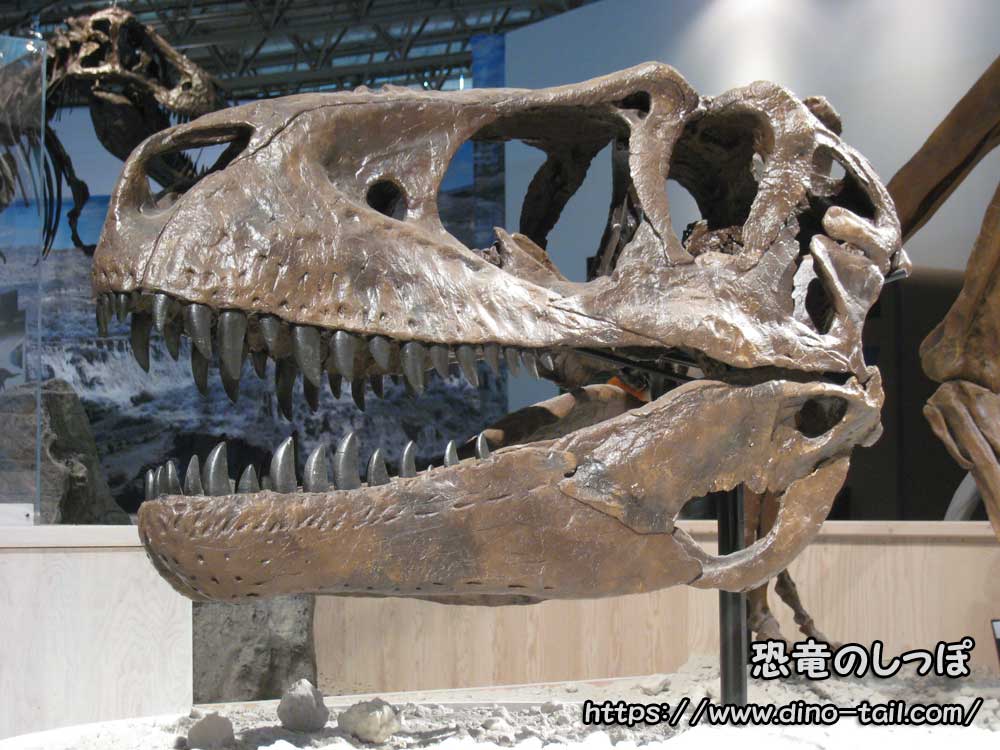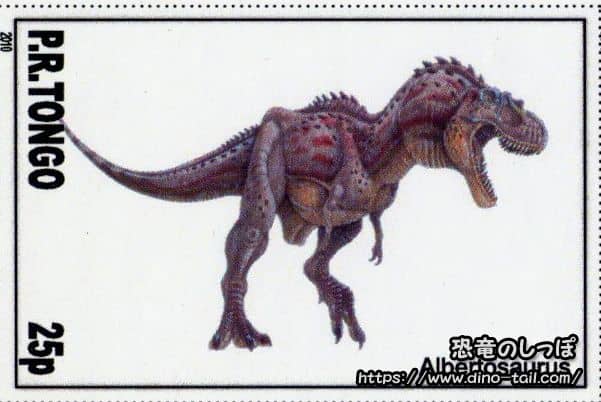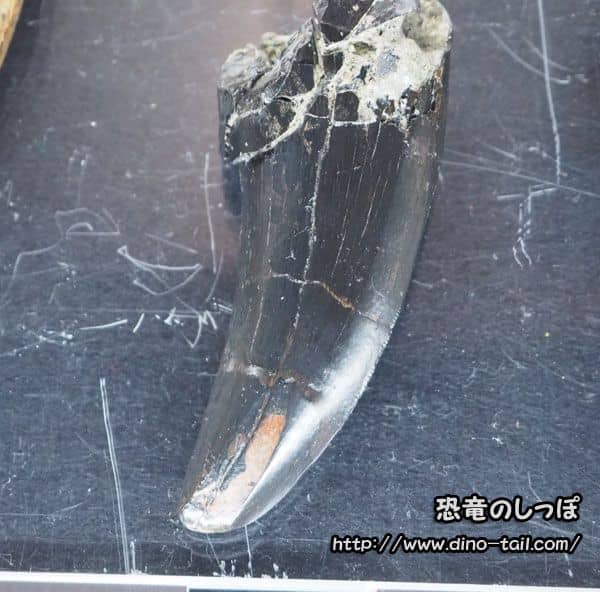About Albertosaurus
| Scientific Name (Genus) | Albertosaurus |
| Meaning of Name |
Alberta (Canadian province) lizard
Alberta [Place Name] - saurus (lizard) [Greek] |
| Classification | Saurischia, Theropoda, Tyrannosauridae, Albertosaurinae |
| Total Length | Approx. 9m |
| Diet | Carnivorous |
| Period | Late Cretaceous (approx. 70 million years ago) |
| Sub-classification/Species | Albertosaurus sarcophagus |
| Year of Paper Publication | 1905 |
| Genus Name Publication | Osborn, H. F. (1905). Tyrannosaurus and other Cretaceous carnivorous dinosaurs. Bulletin of the AMNH, 21(14), 259-265. |
Tyrannosaurus's Agile Relative

Albertosaurus is a large carnivorous dinosaur from the Tyrannosauridae family, closely related to the famous Tyrannosaurus rex. It appeared several million years before Tyrannosaurus and was the apex predator of its time.
Compared to Tyrannosaurus, Albertosaurus had a lighter build and a more slender physique. Its hind legs were particularly long, making up a significant portion of its body mass, which suggests it was more agile and could run faster than Tyrannosaurus. This difference in build likely influenced its hunting style, indicating it may have been a more mobile hunter.
The Mystery of the Pack and the Trail of Growth

The key to understanding the ecology of Albertosaurus lies in the "Dry Island Bonebed" discovered in Alberta, Canada. This remarkable fossil site yielded the remains of over 26 individuals of different ages found together. This discovery suggests two major possibilities about their behavior.
One is the possibility that they lived in groups. The discovery of various aged individuals together strongly suggests that Albertosaurus did not live alone but formed packs, possibly consisting of family members. This "pack hunting theory" proposes that they engaged in sophisticated cooperative hunting, where younger individuals would chase prey towards the older, more powerful members who would deliver the final blow.
Another significant outcome is the clarification of their growth process. Thanks to the collection of bones from different age groups, scientists have been able to trace their life cycle by examining growth lines in the bones. Studies indicate that an individual that was about 2 meters long and weighed 50 kg at the age of two would experience a rapid "growth spurt" during its teenage years (around 12-16 years old), gaining over 120 kg per year. It is estimated that they reached adulthood before the age of 20 and had a lifespan of about 30 years.
Habitat and Prey

During the Late Cretaceous, when Albertosaurus lived, western North America was a warm, humid region with an inland sea. The coastal areas featured vast floodplains and forests, creating a rich environment that supported a diverse range of dinosaurs.
Albertosaurus's teeth were thick and robust, similar to those of Tyrannosaurus, resembling spikes rather than knives. This structure allowed them to not only slice through flesh but also to generate a powerful bite force capable of crushing bone.
Furthermore, Albertosaurus exhibited "heterodonty," meaning the shape and function of its teeth varied depending on their position in the mouth. The teeth at the front of the jaw were D-shaped in cross-section and relatively small, suitable for gripping prey and tearing flesh from bone. In contrast, the teeth on the sides were larger and served as powerful weapons to inflict fatal damage. This division of labor among its teeth enabled it to hunt efficiently.
In this environment, Albertosaurus reigned as the apex predator, primarily preying on hadrosaurs like Edmontosaurus. By hunting in packs, they might have also been able to take down larger prey, such as horned dinosaurs.
Packs and Cannibalism

Counterarguments to the Pack Hypothesis
The discovery of individuals of various ages together at the Dry Island Bonebed is considered strong evidence for the "pack hunting theory."
However, in the world of science, alternative possibilities are always explored. For example, some argue that the fossil assemblage might not represent a pack but rather the result of individuals gathering at a water source during a drought and dying off. The possibility of a flood accumulating the carcasses in one location has also been suggested, and the debate over whether they truly formed social groups continues.
Evidence of Cannibalism
Among the Albertosaurus fossils, some have been found with tooth marks that appear to have been made by other Albertosaurus.
This is stark evidence suggesting fierce competition for territory and prey, and the possibility that "cannibalism" - feeding on their own kind - sometimes occurred.
Discovery and Naming

The story of Albertosaurus began in 1884 when Canadian geologist Joseph Tyrrell accidentally discovered an incomplete skull while searching for coal seams. However, its full significance was not yet understood.
Later, in 1905, the renowned American paleontologist Henry Fairfield Osborn studied the fossil and officially named it a new species of carnivorous dinosaur, "Albertosaurus sarcophagus." The name "sarcophagus" means "flesh-eater," a fitting name for this predator.
The most crucial discovery in the research history of Albertosaurus was the "Dry Island Bonebed," found in 1910 by a team led by fossil hunter Barnum Brown. This site has yielded numerous individuals and remains the world's most important source of clues for unraveling the growth and social structure of Albertosaurus.
